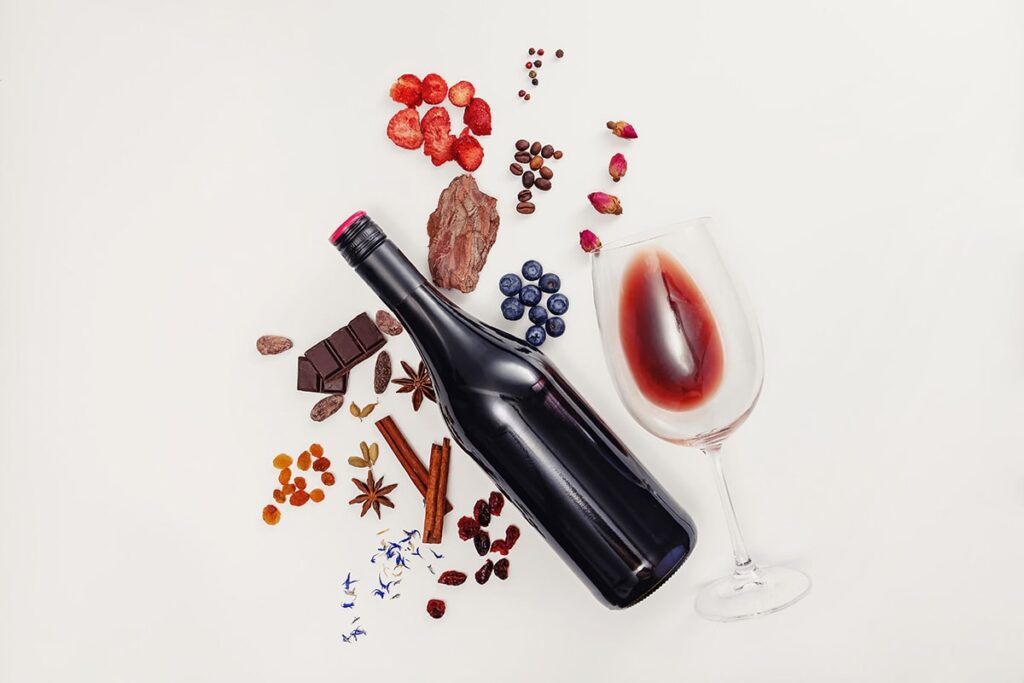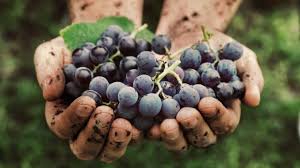1. The Vineyard: Nurturing the Grapes
The journey begins in the vineyard, where carefully selected grape varietals like Cabernet Sauvignon, Merlot, Pinot Noir, or Syrah thrive under the sun's embrace. The soil, climate, and meticulous care given to these vines all contribute to the unique characteristics each grape will bring to the final wine.
2. Harvest: A Time of Celebration
Harvest is a joyous time in the vineyard as the ripe grapes are carefully handpicked or gently harvested by machine. Timing is crucial, as the grapes must be picked at their peak of ripeness to ensure optimal sugar and acidity levels.
3. Sorting and Destemming:
Once harvested, the grapes are sorted to remove any unwanted leaves, stems, or unripe berries. Many winemakers then destem the grapes, separating the berries from the stems. This step is important because stems can impart unwanted bitterness to the wine.
4. Crushing:
The grapes are gently crushed to release their juice, skins, and seeds. This mixture is known as "must." Some winemakers prefer to crush the grapes by foot, a traditional method that ensures gentle handling, while others use mechanical crushers.
5. Fermentation: The Magic Begins
The must is transferred to fermentation tanks, where yeast is added to initiate fermentation. Yeast converts the natural sugars in the grape juice into alcohol, producing heat and carbon dioxide in the process. Red wine fermentation typically takes place at warmer temperatures than white wine fermentation, enhancing the extraction of color and tannins from the grape skins.
6. Maceration: Deepening Flavor and Color
During fermentation, the grape skins are in constant contact with the fermenting juice. This process, called maceration, is crucial for extracting the color, tannins, and complex flavors that characterize red wine. The longer the maceration, the deeper and more intense the wine's color and flavor will become.
7. Pressing:
Once fermentation is complete, the wine is pressed to separate the solids (skins and seeds) from the liquid. This can be done using a variety of presses, from traditional basket presses to modern pneumatic presses.
8. Malolactic Fermentation (Optional):
Some red wines undergo a secondary fermentation called malolactic fermentation. This process converts harsh malic acid into softer lactic acid, resulting in a smoother, more buttery mouthfeel.
9. Aging: Time for Transformation
The young wine is then transferred to oak barrels or stainless steel tanks for aging. Oak barrels impart subtle flavors of vanilla, spice, and toast, while stainless steel preserves the wine's fresh fruitiness. The aging period can range from a few months to several years, depending on the desired style of wine.
10. Blending (Optional):
Winemakers often blend different grape varietals or wines from different barrels to achieve a specific flavor profile. Blending is an art that requires skill and experience.
11. Clarification and Filtration:
Before bottling, the wine is clarified and filtered to remove any sediment or impurities. Clarification can be done through fining (adding a substance that binds to unwanted particles) or racking (transferring the wine to a new vessel, leaving the sediment behind).
12. Bottling: A Moment of Anticipation
Finally, the wine is bottled and corked, ready to be enjoyed. The bottled wine may undergo further aging in the bottle, allowing it to develop even more complexity and depth of flavor.
Savoring the Fruits of the Journey
The next time you uncork a bottle from In The Cru Wine Shop, take a moment to appreciate the incredible journey it has taken to reach your glass. Every sip is a testament to the passion, dedication, and artistry that goes into crafting exceptional red wines.
At [Your Winery Name], we invite you to explore our online shop and discover the diverse array of red wines we have to offer. Each bottle represents a unique expression of our terroir and winemaking philosophy. Cheers to the art of red winemaking!





